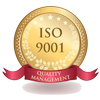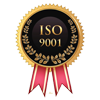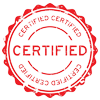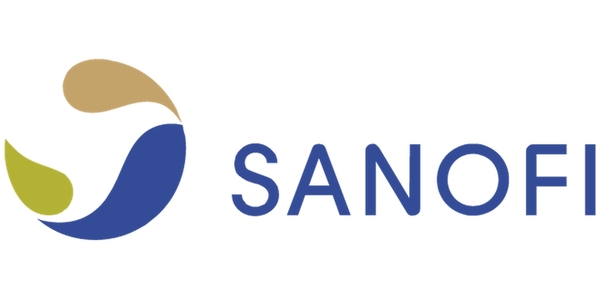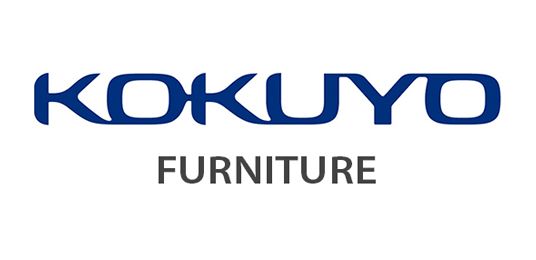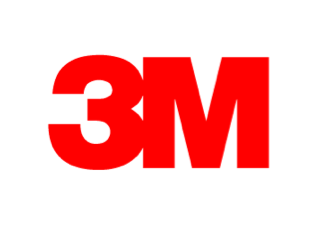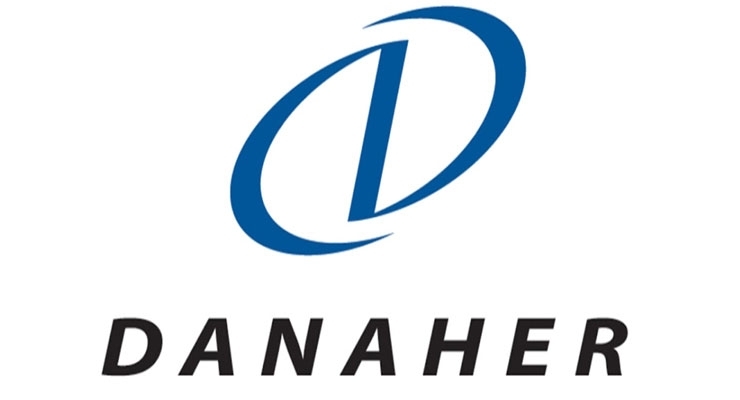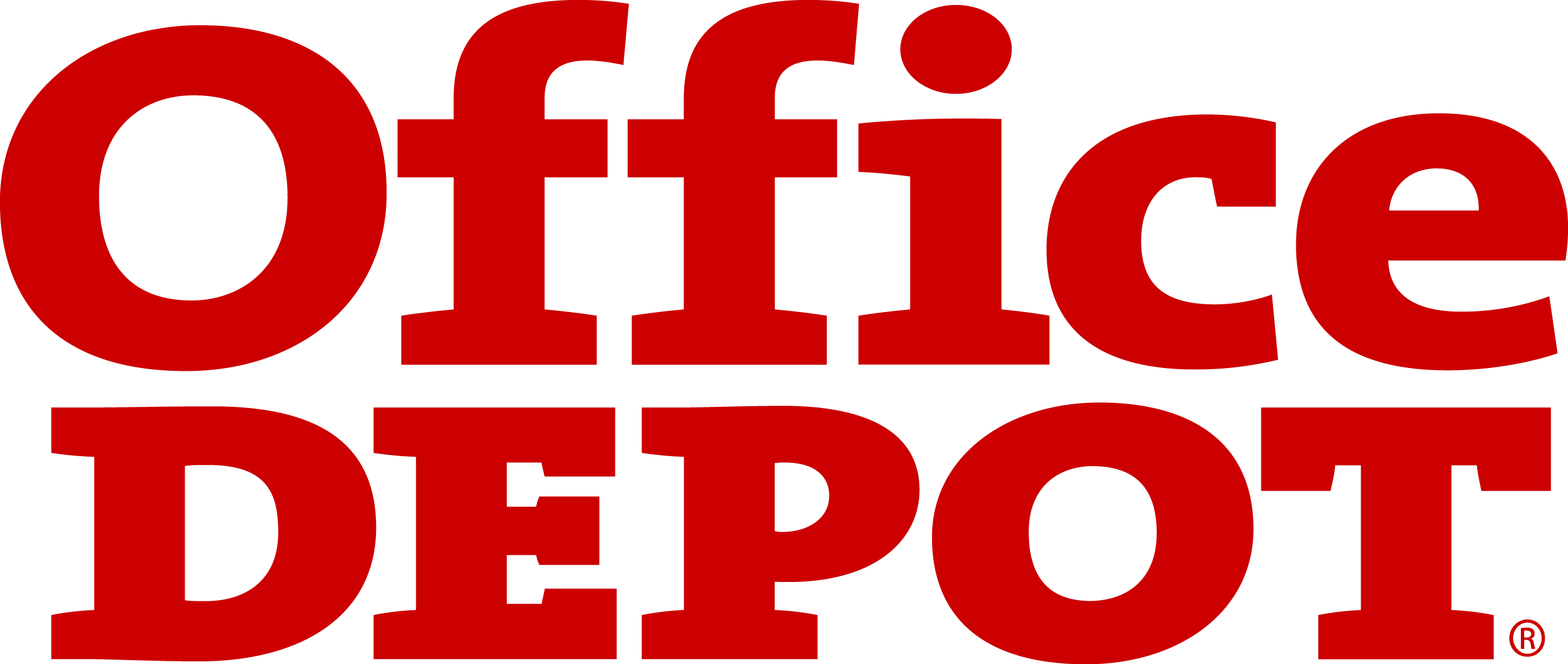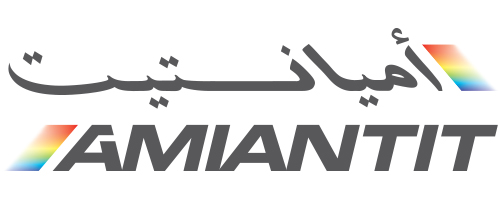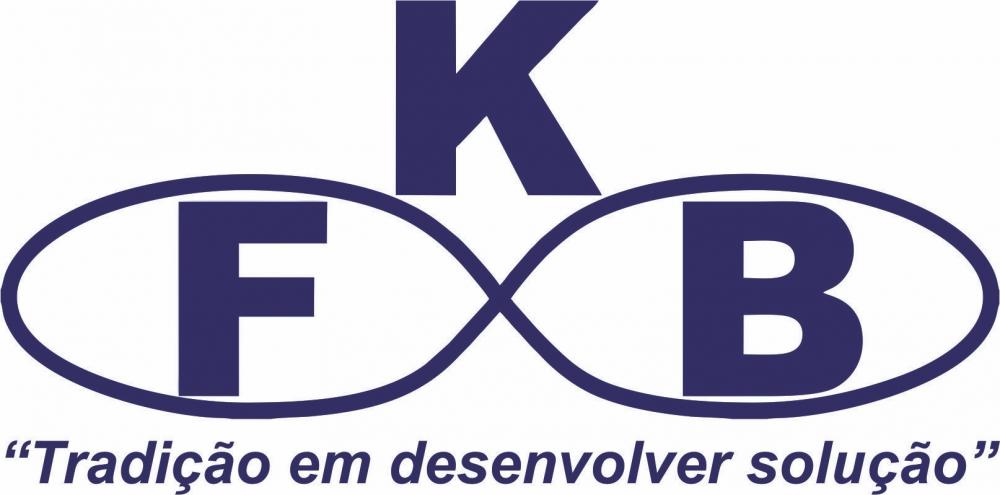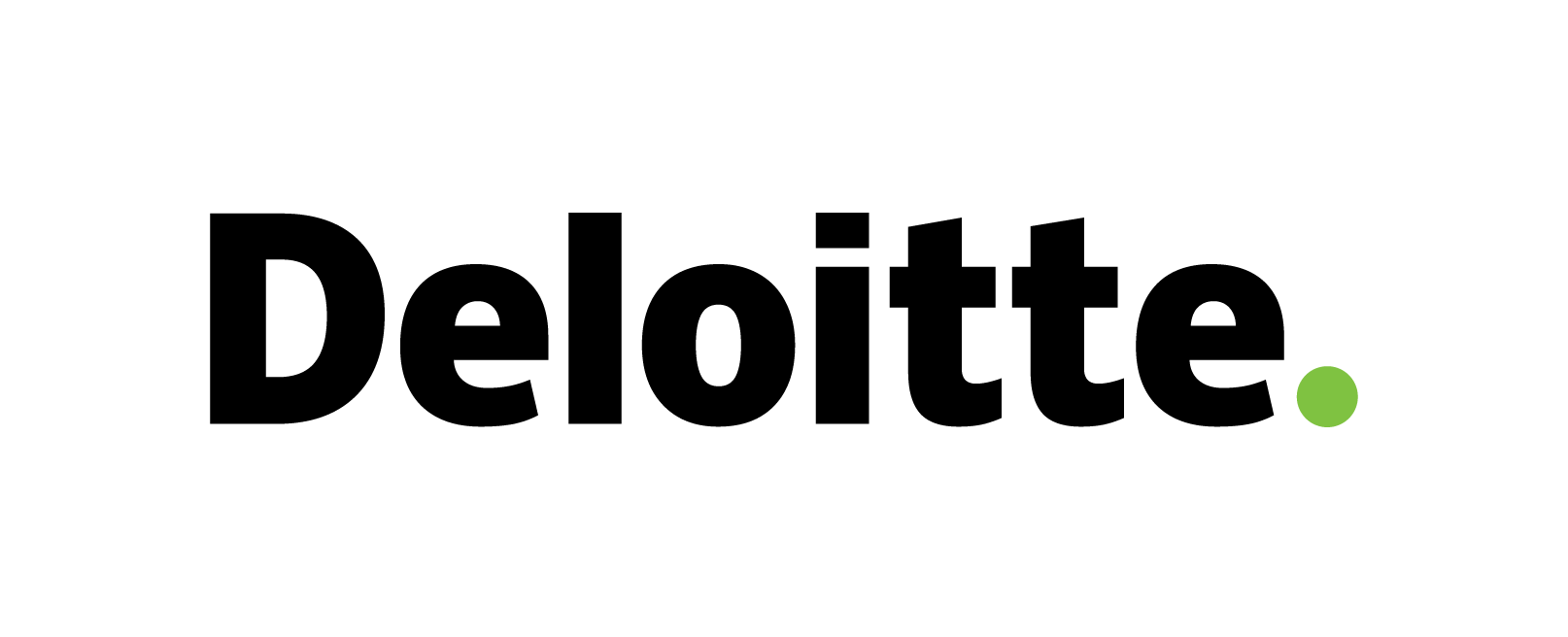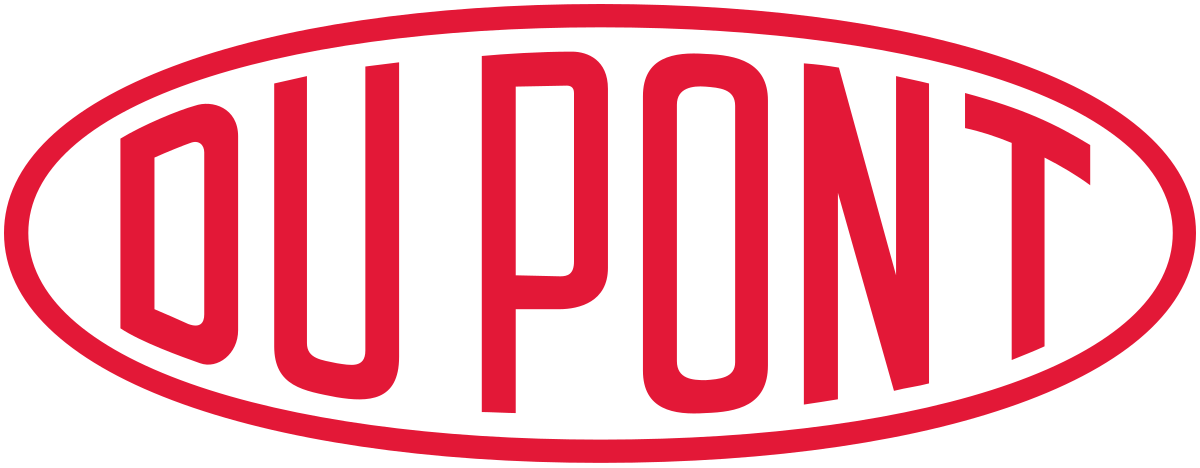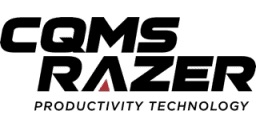Flat Glass Market
Flat Glass Market Trend, Opportunity, and Forecast Analysis, 2024-2032
Flat Glass Market is segmented by Product, End User, and by Region. KDMI analyst foresees market revenue to cross USD 180.17 Billion by 2032 by growing with a CAGR of 5.6% during 2024-2032.
Flat Glass Market Highlights
The global flat glass market is expected to cross a value of USD 180.17 billion by the end of 2032. The market was valued at USD 122.6 billion in 2023 and is expected to expand at a CAGR of 5.6% between 2024-2032.
- Over the mid-term, the surge in the number of construction and infrastructure projects is the primary factor anticipated to drive the global flat glass market.
- The fluctuating cost of raw materials is a major factor to challenge the market growth.
- The Asia Pacific flat glass market is projected to dominate the global market.
Flat Glass Market: Report Scope |
|
|
Base Year |
2023 |
|
Base Year Market Size |
USD 122.6 Billion |
|
Forecast Year |
2024-2032 |
|
Forecast Year Market Size |
USD 180.17 Billion |
|
CAGR Value |
5.6% |
|
Flat Glass Market Key Trends/Major Growth Drivers |
|
|
Restraint Factors |
|
|
Flat Glass Market Segmentation |
|
|
Flat Glass Market Key Players |
AGC Inc., Sisecam Group, Saint-Gobain, GUARDIAN GLASS LLC, Nippon Sheet Glass Co. Ltd., Fuyao Glass Industry Group Co. Ltd., Vitro Taiwan Glass Industry Corporation, Changzhou Almaden Co. Ltd., SCHOTT AG, GSC GLASS LTD, and others. |
Flat Glass Market Outlook
The type of glass that is produced in large, flat sheets or panes, and is characterized by its smooth, flat surface and uniform thickness is known as flat glass. This glass is usually manufactured using the float glass manufacturing process and is used in a wide range of applications across various industries.
According to our experts at KD Market Insights, one of the major factors anticipated to drive the growth of the global flat glass market is the surge in the number of construction and infrastructure projects worldwide, supported majorly by the growing global infrastructure and construction industry. Our researchers estimate that the revenue generated from the infrastructure and construction industry would reach near to USD 4.2 trillion, recording a CAGR of near to 7% during the forecast period. Flat glass is widely used in the construction industry as windows, doors, facades, and other building materials. With the rise in the number of infrastructure projects globally, the demand for the glass is expected to increase. AGC Inc., Sisecam Group, Saint-Gobain, and GUARDIAN GLASS LLC are some of the significant parties in the global market for flat glass.
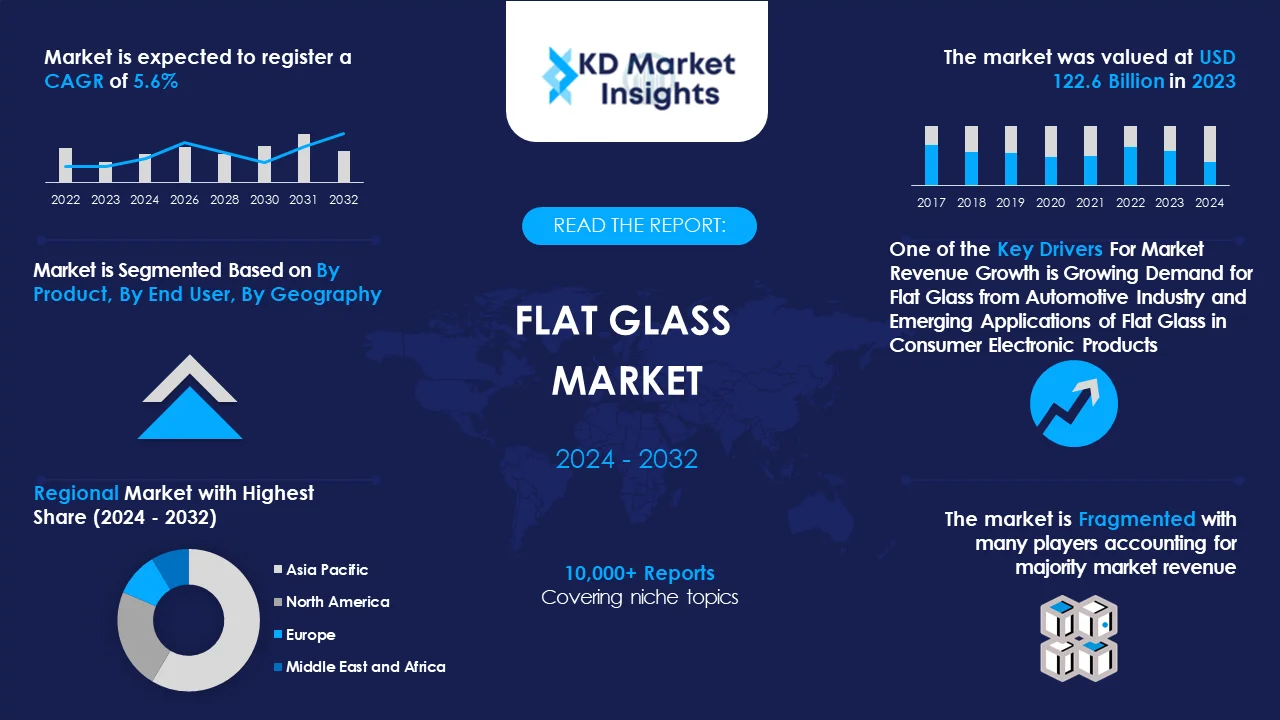 Get More Insights on This Report - Request Free Sample PDF
Get More Insights on This Report - Request Free Sample PDF
Flat Glass Market Drivers – Analyst’s Observation
According to the analysts at KD Market Insights, some key growth drivers for the global flat glass market are:
- Growing Demand for Flat Glass from Automotive Industry: In the automotive industry, flat glass is an essential component as it is used in windshields, windows, sunroofs, and other automotive glazing applications. With an increase in the number of vehicles produced globally, which according to the International Organization of Motor Vehicle Manufacturers (OICA), touched 93546599 units in the year 2023, the demand for this glass is expected to increase, which in turn, is projected to drive the market growth in the coming years.
- Emerging Applications of Flat Glass in Consumer Electronic Products: Flat glass is nowadays widely used in different types of consumer electronic products, such as smartphones, tablets, televisions, and computer monitors among others as display panels and cover glass. With an increase in the production of these consumer electronic products worldwide, the demand for flat glass is also expected to increase.
Which Probable Factors Could Hamper the Growing Flat Glass Market Trend?
As per our KD Market Insights analysis, some of the challenges expected to limit the global market growth of flat glass are:
- Fluctuating Cost of Raw Materials: One of the major concerning factors associated with the market growth of flat glass is the fluctuating cost of raw materials, such as silica sand, soda ash, limestone, and other chemicals. Any price fluctuations result in an increase in the final product cost, which ultimately hampers the demand for the product.
- Availability of Low Cost Alternatives: Another factor expected to limit the market growth of flat glass is the availability of low cost alternatives, such as plastics, polymers, and composites among others. These alternatives also provide greater beneficial properties as compared to flat glass, and hence, end-use manufacturers are increasingly preferring for these substitutes.
How is the Global Flat Glass Market Segmented?
Our experts at KD Market Insights have segmented the global flat glass market as:
|
By Product |
|
|
By End User |
|
|
By Region |
|
What are the Probable Factors Influencing the Asia Pacific Market Forecast?
The Asia Pacific flat glass market is majorly driven by the presence of a strong automotive industry, which is one of the major consumers of flat glass in the region. Besides this, the countries in the region are also witnessing heavy investments for infrastructural development, which is also raising the demand for different construction materials, including flat glass. Additionally, the region also boasts a strong consumer electronics industry, especially in countries, such as China, Japan, Taiwan, South Korea, and India, where flat glass is widely used for manufacturing different consumer electronic products. The region is also home to some of the largest flat glass manufacturers, which is also anticipated to promote the market growth in the region.
As per our analysts at KD Market Insights, the following five players lead the Asia Pacific flat glass market growth:
- Asahi Glass Co., Ltd.
- Nippon Sheet Glass Co., Ltd.
- Saint-Gobain
- Taiwan Glass Ind. Corp.
- Xinyi Glass Holdings Limited
|
Key Countries to Watch for in Asia Pacific Flat Glass Market |
Key Insights |
|
China Flat Glass Market to Register the Largest Regional Market Share in 2032 |
USD 21.62 Billion |
|
Japan Flat Glass Market to Grow with the Highest CAGR During 2024-2032 |
5.8% |
Which Key Players Top the Global Flat Glass Market Share?
As per our analysts at KD Market Insights, the competitive landscape of global flat glass market facilitates our readers in identifying their closest competitors. The manufacturers who are associated with flat glass market are raising their focus on expanding their presence, as well as their market share. The market has also been witnessing an upward movement in the number of collaborations between research institutions and key players, aimed at introducing advanced technologies and innovation of new products. Here is a list of the key players who top the global flat glass market share:
- AGC Inc.
- Sisecam Group
- Saint-Gobain
- GUARDIAN GLASS LLC
- Nippon Sheet Glass Co. Ltd.
- Fuyao Glass Industry Group Co. Ltd.
- Vitro Taiwan Glass Industry Corporation
- Changzhou Almaden Co. Ltd.
- SCHOTT AG
- GSC GLASS LTD.
What are the Recent Developments Observed in the Flat Glass Market?
Over the years, the experts at KD Market Insights have been observing the recent developments associated with global flat glass market trends. Our expert’s market forecast analysis has recorded the market players adopting plentiful of key strategies including new product launches, mergers & acquisitions, and collaborations.
For instance, AGC Glass Europe S.A. stated that it would produce a line of float glass with a massive reduced carbon footprint of less than 7kg of CO2 per m2 for clear glass having 4mm thickness.
Further, Saint Gobain stated that it has launched its highly reflecting glass known as MIRASTAR REFLECT.
Research Methodology
Market Definition and List of Abbreviations
1. Executive Summary
2. Growth Drivers & Issues in Global Flat Glass Market
3. Global Flat Glass Market Trends
4. Opportunities in Global Flat Glass Market
5. Recent Industry Activities, 2021
6. Porter's Five Forces Analysis
7. Market Value Chain and Supply Chain Analysis
8. Global Flat Glass Market Size (USD Million), Forecast & Y-o-Y Growth Analysis, 2021-2027
9. Global Flat Glass Market Segmentation Analysis, By Type
9.1. Introduction
9.2. Market Attractiveness, By Type
9.3. BPS Analysis, By Type
9.3.1. Tempered
9.3.2. Laminated
9.3.3. Basic Float
9.3.4. Insulating
9.3.5. Others
10. Global Flat Glass Market Segmentation Analysis, By Application
10.1. Introduction
10.2. Market Attractiveness, By Application
10.3. BPS Analysis, By Application
10.4. Automotive
10.4.1. OEM
10.4.2. Aftermarket
10.5. Construction
10.5.1. New
10.5.2. Refurbishment
10.5.3. Interior
10.6. Others
11. Geographical Analysis
11.1. Introduction
11.2. North America Flat Glass Market Size (USD Million), Forecast & Y-o-Y Growth Analysis, 2021-2027
11.2.1. By Type
11.2.2. By Application
11.2.3. By Country
11.2.3.1. Market Attractiveness, By Application
11.2.3.2. BPS Analysis, By Application
11.2.3.3. U.S. Market Size (USD Million), Forecast & Y-o-Y Growth Analysis, 2021-2027
11.2.3.4. Canada Market Size (USD Million), Forecast & Y-o-Y Growth Analysis, 2021-2027
11.3. Europe Flat Glass Market Size (USD Million), Forecast & Y-o-Y Growth Analysis, 2021-2027
11.3.1. By Type
11.3.2. By Application
11.3.3. By Country
11.3.3.1. Market Attractiveness, By Country
11.3.3.2. BPS Analysis, By Country
11.3.3.3. Germany Market Size (USD Million), Forecast & Y-o-Y Growth Analysis, 2021-2027
11.3.3.4. United Kingdom Market Size (USD Million), Forecast & Y-o-Y Growth Analysis, 2021-2027
11.3.3.5. France Market Size (USD Million), Forecast & Y-o-Y Growth Analysis, 2021-2027
11.3.3.6. Italy Market Size (USD Million), Forecast & Y-o-Y Growth Analysis, 2021-2027
11.3.3.7. Spain Market Size (USD Million), Forecast & Y-o-Y Growth Analysis, 2021-2027
11.3.3.8. Russia Market Size (USD Million), Forecast & Y-o-Y Growth Analysis, 2021-2027
11.3.3.9. Rest of Europe Market Size (USD Million), Forecast & Y-o-Y Growth Analysis, 2021-2027
11.4. Asia Pacific Flat Glass Market Size (USD Million), Forecast & Y-o-Y Growth Analysis, 2021-2027
11.4.1. By Type
11.4.2. By Application
11.4.3. By Country
11.4.3.1. Market Attractiveness, By Country
11.4.3.2. BPS Analysis, By Country
11.4.3.3. China Market Size (USD Million), Forecast & Y-o-Y Growth Analysis, 2021-2027
11.4.3.4. India Market Size (USD Million), Forecast & Y-o-Y Growth Analysis, 2021-2027
11.4.3.5. Japan Market Size (USD Million), Forecast & Y-o-Y Growth Analysis, 2021-2027
11.4.3.6. South Korea Market Size (USD Million), Forecast & Y-o-Y Growth Analysis, 2021-2027
11.4.3.7. Indonesia Market Size (USD Million), Forecast & Y-o-Y Growth Analysis, 2021-2027
11.4.3.8. Taiwan Market Size (USD Million), Forecast & Y-o-Y Growth Analysis, 2021-2027
11.4.3.9. Australia Market Size (USD Million), Forecast & Y-o-Y Growth Analysis, 2021-2027
11.4.3.10. New Zealand Market Size (USD Million), Forecast & Y-o-Y Growth Analysis, 2021-2027
11.4.3.11. Rest of Asia Pacific Market Size (USD Million), Forecast & Y-o-Y Growth Analysis, 2021-2027
11.5. Latin America Flat Glass Market Size (USD Million), Forecast & Y-o-Y Growth Analysis, 2021-2027
11.5.1. By Type
11.5.2. By Application
11.5.3. By Country
11.5.3.1. Market Attractiveness, By Country
11.5.3.2. BPS Analysis, By Country
11.5.3.3. Brazil Market Size (USD Million), Forecast & Y-o-Y Growth Analysis, 2021-2027
11.5.3.4. Mexico Market Size (USD Million), Forecast & Y-o-Y Growth Analysis, 2021-2027
11.5.3.5. Rest of Latin America Market Size (USD Million), Forecast & Y-o-Y Growth Analysis, 2021-2027
11.6. Middle East & Africa Flat Glass Market Size (USD Million), Forecast & Y-o-Y Growth Analysis, 2021-2027
11.6.1. By Type
11.6.2. By Application
11.6.3. By Country
11.6.3.1. Market Attractiveness, By Geography
11.6.3.2. BPS Analysis, By Geography
11.6.3.3. GCC Market Size (USD Million), Forecast & Y-o-Y Growth Analysis, 2021-2027
11.6.3.4. North Africa Market Size (USD Million), Forecast & Y-o-Y Growth Analysis, 2021-2027
11.6.3.5. South Africa Market Size (USD Million), Forecast & Y-o-Y Growth Analysis, 2021-2027
11.6.3.6. Rest of Middle East & Africa Market Size (USD Million), Forecast & Y-o-Y Growth Analysis, 2021-2027
12. Competitive Landscape
12.1. Market Share of Key Players
12.2. Market Positioning of Major Players in Global Flat Glass Market
12.3. Company Profiles
12.3.1. AGC
12.3.1.1. Product Offered
12.3.1.2. Business Strategy
12.3.1.3. Financials
12.3.1.4. SWOT Analysis
12.3.1.5. Market Share Analysis
12.3.1.6. Key Achievements & Developments
12.3.2. PPG
12.3.3. Guardian
12.3.4. GrayGlass
12.3.5. Duratuf Glass Industries
12.3.6. Xinyi Auto Glass
12.3.7. GSC Glass Ltd
12.3.8. Saint-Gobain
12.3.9. Asahi India Glass Limited
12.3.10. Independent Glass Co
12.3.11. CSG Architectural Glass
12.3.12. Astrocam
12.3.13. Other Major & Niche Players

Need Customized Report for Your Business ?
Utilize the Power of Customized Research Aligned with Your Business Goals
Request for Customized Report- Quick Contact -
- ISO Certified Logo -
